Oct 29, 2019
Philanthropy has supported solutions to address some of the most important challenges of our time. And yet, income inequality is greater than ever before, millions of Americans still don’t have access to quality health care, and people across the country struggle to put food on the table for their families. These are only a few of the urgent challenges facing our communities. Philanthropy must do more – and we can.
We’re living in an unprecedented time in philanthropy with nearly $1 trillion available in philanthropic assets. Many foundations spend only 5% of their assets each year, as the IRS requires. Imagine what would be possible – how we could quicken the pace of social change – if we went all in on the solutions with the power to change individual lives, communities and the world. Imagine what we could achieve if we committed 100% of our endowments, instead of 5%, over the next 10 years or 20 years.
Foundations like Atlantic; S.D. Bechtel, Jr.; the Whitman Institute; and others inspired the spend down movement – a shift from foundations operating in perpetuity to giving big over a short amount of time before closing their doors. As the CEO of the Stupski Foundation, I am grateful to be a part of this movement to transform how we give back to the communities that have given us so much.
Following the vision of our founder, Joyce Stupski – a longtime philanthropist, entrepreneur, and former school teacher and administrator – the Stupski Foundation will invest all of our assets (approximately $250 million) over the next 10 years into four priority issue areas: early brain development, hunger, postsecondary success, and serious illness care. To put this vision into action, we prioritize investments in large-scale systems improvements in the communities we call home – the San Francisco Bay Area and Hawaiʻi. By investing big locally, we believe we can make the greatest possible change in our communities today.
If we only invest a maximum of 5% annually, we would limit our ability to move the needle. By spending down our assets, we have the resources to test solutions and pivot our approaches based on what we’re learning. For example, we announced a $14 million investment in seven key health systems across the Bay Area to spur the creation of comprehensive serious illness care programs that support patients at the end of life. The package of investments will significantly increase Bay Area health systems’ ability to provide palliative care, a medical specialty that gives patients relief from the symptoms and stress of a serious illness and improves quality of life for the patient and the patient’s loved ones. Had we stayed locked into a 5% maximum investment, our ability to catalyze our partners’ work would be virtually impossible.
Since we have identified a clear end date for our work, we must work with our partners to continue making progress after 2029. For each strategy we develop, we build in a plan for long-term sustainability with our partners who will lead the work going forward. This means that our partners enter the relationship knowing that we must work with our grantees to ensure that they can finance efforts after we close our doors, seek cost-savings through innovation, and identify existing pools of capital to continue successful efforts.
We’re committed to change in the short and long term. We’re giving in the shorter term – giving with urgency – and working with sustainability in mind from the beginning to achieve the greatest-possible change with our philanthropy and plan for lasting impact. The opportunity to take on urgent challenges with urgent action is exciting. Knowing that our legacy depends on what we do today, as opposed to building a brand for the future, is invigorating.
We encourage other funders to consider giving urgently, too, so we don’t wait another 50 years for the change that our communities need now. Because change can’t wait!


